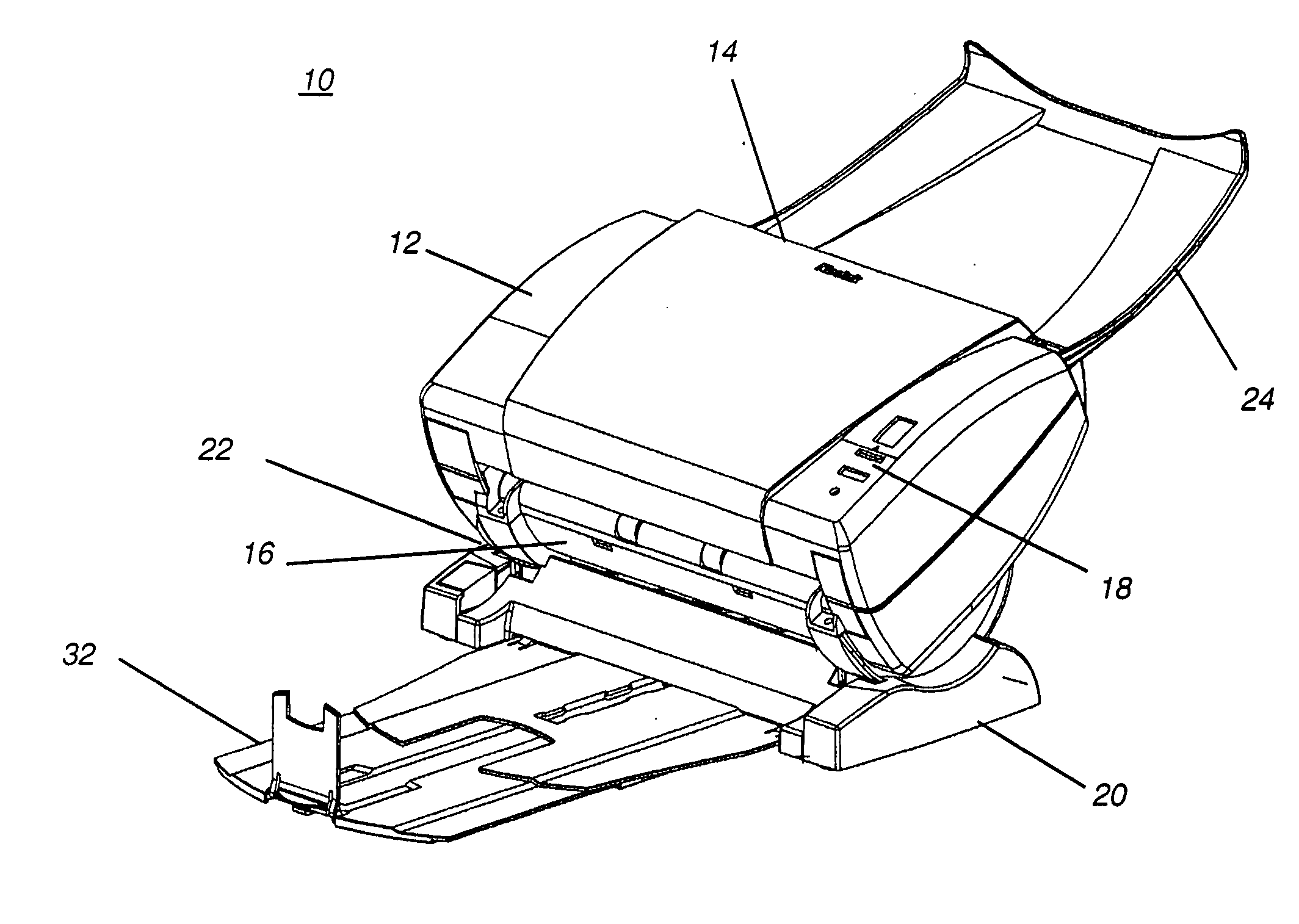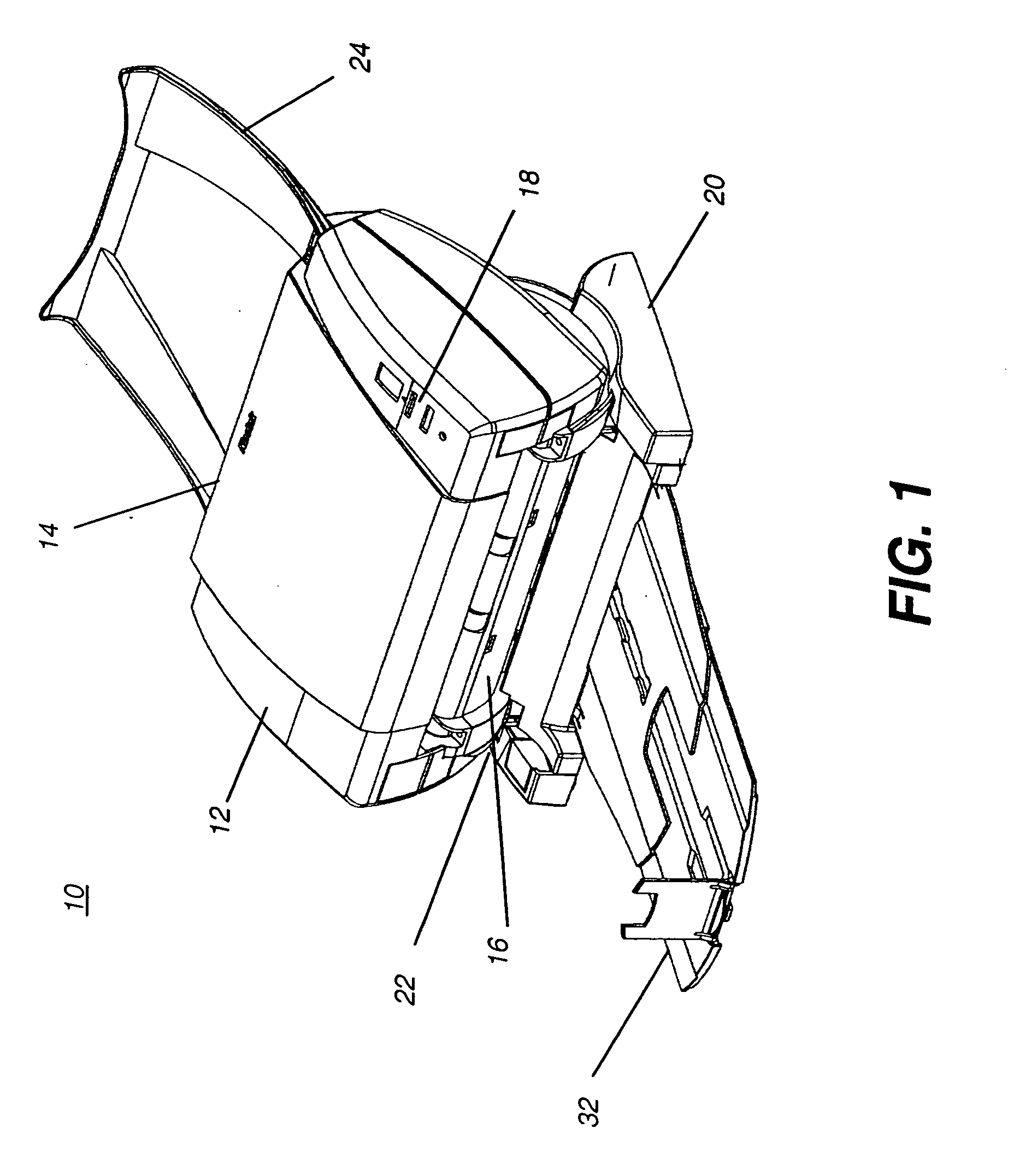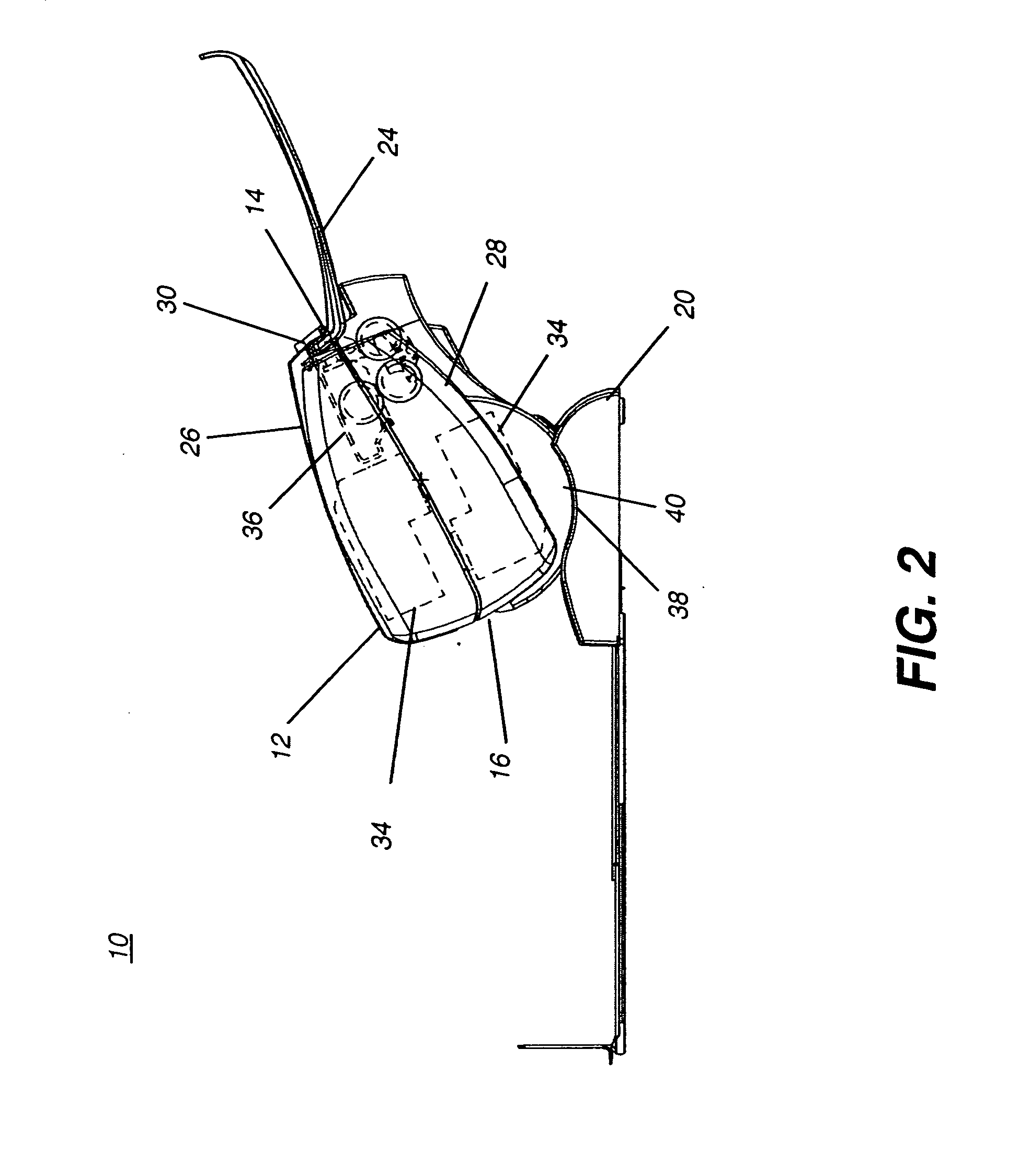Tiltable document imaging apparatus
- Summary
- Abstract
- Description
- Claims
- Application Information
AI Technical Summary
Benefits of technology
Problems solved by technology
Method used
Image
Examples
Embodiment Construction
[0034] The present description is directed in particular to elements forming part of, or cooperating more directly with, apparatus in accordance with the invention. It is to be understood that elements not specifically shown or described may take various forms well known to those skilled in the art.
[0035] The term “document imaging apparatus” as used herein refers to the large class of devices that are either used for recording document data in either of two directions: (i) recording images and other types of human-readable information onto a sheet of substrate to form a document according to image data, or (ii) obtaining and recording machine-readable image data from a document sheet by optical scanning. Devices for recording human-readable information onto a document sheet include various types of printer apparatus, such as inkjet, thermal, photographic, laser, and line printers, for example. Devices for obtaining and recording machine-readable image data are generally classified...
PUM
 Login to View More
Login to View More Abstract
Description
Claims
Application Information
 Login to View More
Login to View More - R&D
- Intellectual Property
- Life Sciences
- Materials
- Tech Scout
- Unparalleled Data Quality
- Higher Quality Content
- 60% Fewer Hallucinations
Browse by: Latest US Patents, China's latest patents, Technical Efficacy Thesaurus, Application Domain, Technology Topic, Popular Technical Reports.
© 2025 PatSnap. All rights reserved.Legal|Privacy policy|Modern Slavery Act Transparency Statement|Sitemap|About US| Contact US: help@patsnap.com



